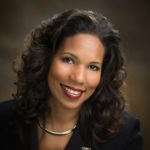Last week, a JBHE post noted the impressive enrollment numbers of two private HBCUs, Shaw University in Raleigh, North Carolina, and Claflin University in Orangeburg, South Carolina. More good news on the enrollment front was revealed this week.
 Florida Memorial University in Miami Gardens reports the largest entering class in the past six-years. There are 498 students in the first-year class at Florida Memorial University, an increase of 100 from last year’s entering class. Roslyn Artis, president of Florida Memorial University credits a summer orientation program for preparing students to enter college as a major reason for the enrollment increase.
Florida Memorial University in Miami Gardens reports the largest entering class in the past six-years. There are 498 students in the first-year class at Florida Memorial University, an increase of 100 from last year’s entering class. Roslyn Artis, president of Florida Memorial University credits a summer orientation program for preparing students to enter college as a major reason for the enrollment increase.
 At Harris-Stowe State University in St. Louis, officials report the largest number of entering students in university history. There are 600 first-year and transfer students on campus this fall. This is a 30 percent increase from a year ago and a 50 percent increase from two years ago. The urban university’s two residence halls are filled for the first time in history. Loretta McDonald, director of the Office of Admissions at Harris-Stowe State University, stated that “we provide an academically challenging education at an affordable price in a thriving urban environment. Harris-Stowe is very competitive and attracts students from across the country and around the world. Harris-Stowe is continuing to develop and broaden our aggressive recruitment strategy and it is yielding great results.”
At Harris-Stowe State University in St. Louis, officials report the largest number of entering students in university history. There are 600 first-year and transfer students on campus this fall. This is a 30 percent increase from a year ago and a 50 percent increase from two years ago. The urban university’s two residence halls are filled for the first time in history. Loretta McDonald, director of the Office of Admissions at Harris-Stowe State University, stated that “we provide an academically challenging education at an affordable price in a thriving urban environment. Harris-Stowe is very competitive and attracts students from across the country and around the world. Harris-Stowe is continuing to develop and broaden our aggressive recruitment strategy and it is yielding great results.”
Virginia State University in Petersburg has more than 1,000 first-year students on campus this fall. This is a 30 percent increase from a year ago. Rodney Hall, executive director of enrollment services at Virginia State, said that “our number of new students is quite an accomplishment in a challenging and competitive environment. We can credit this to a number of new creative initiatives across the board as well as the dedication and hard work of our admissions, financial aid, and other departments university-wide.”


The article provides a very positive report regarding student enrollment increases at many of the HBCUs across the country. I hope that those institutions that have achieved these enrollment increases will also put forth the necessary efforts required for improving student persistence and completion rates for freshman students to successfully complete their first year and return for their sophomore year. Most HBCUs have historically been ‘open enrollment’ institutions providing opportunities for those who would not otherwise have the chance based on their academic record, financial circumstances, etc. The issue of providing effective programs and services remains important in order to ensure that the opportunity for these students are not squandered based on what the institution could not effectively provide. Students come with high hopes and dreams of obtaining their degree; it is the institution’s responsibility to fulfill their part of the ‘bargain’ by providing a holistic approach to help the students who are admitted to achieve their dreams. In this way, enrollment increases are not just a temporary occurrence that fails to help students matriculate and persist until they achieve what they come to the institution to obtain, a college degree to contribute to society.